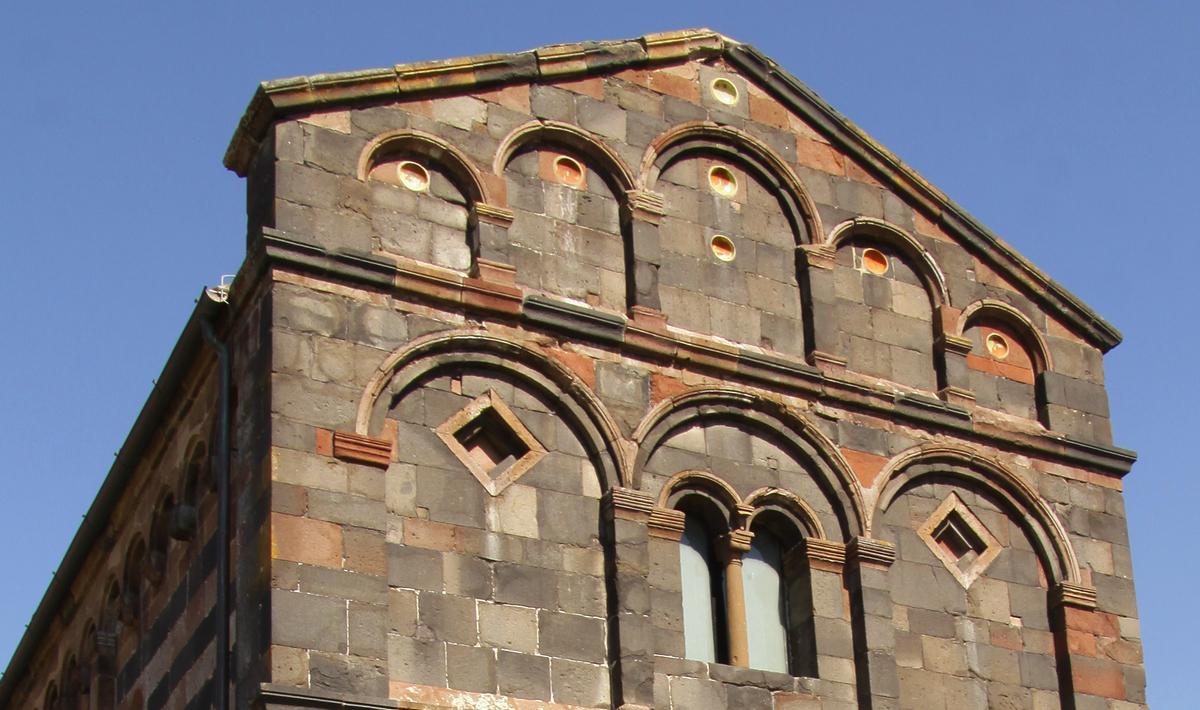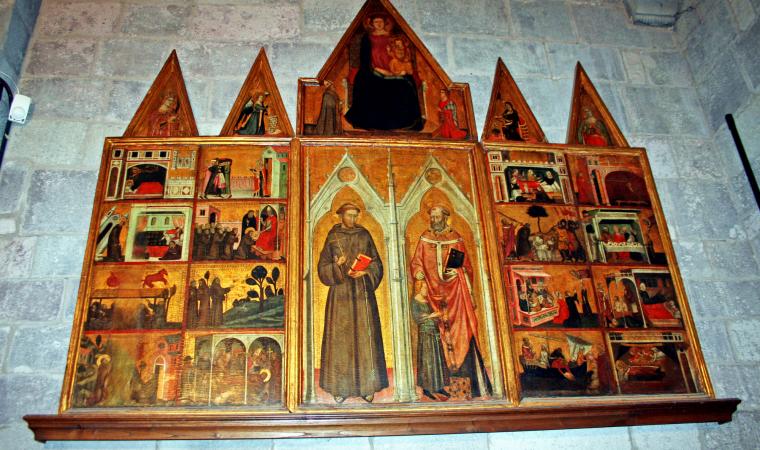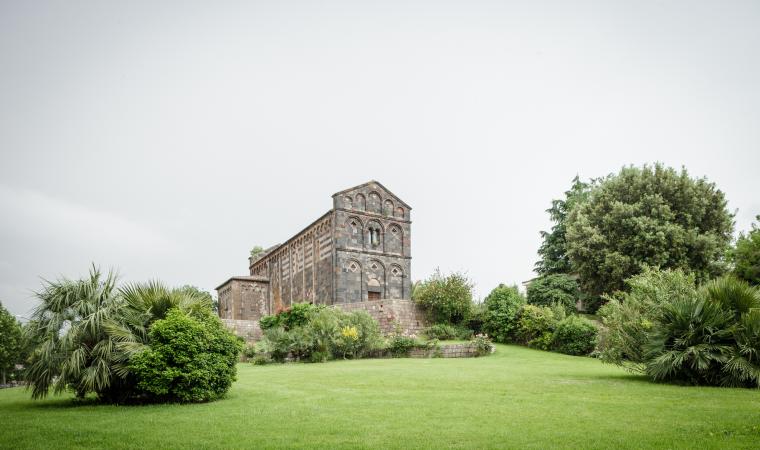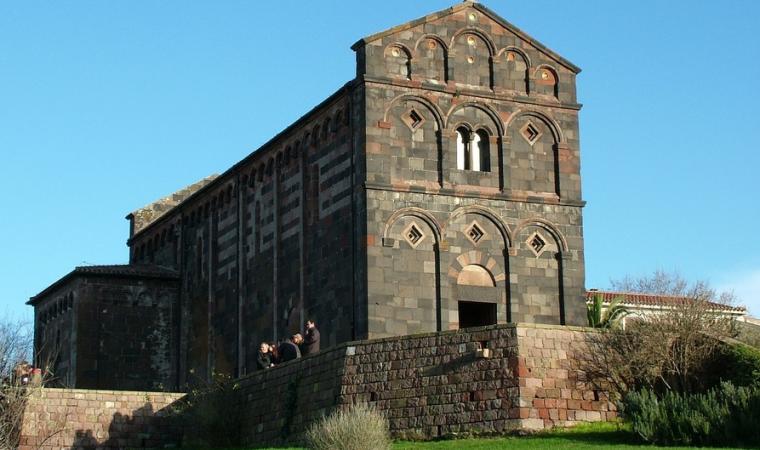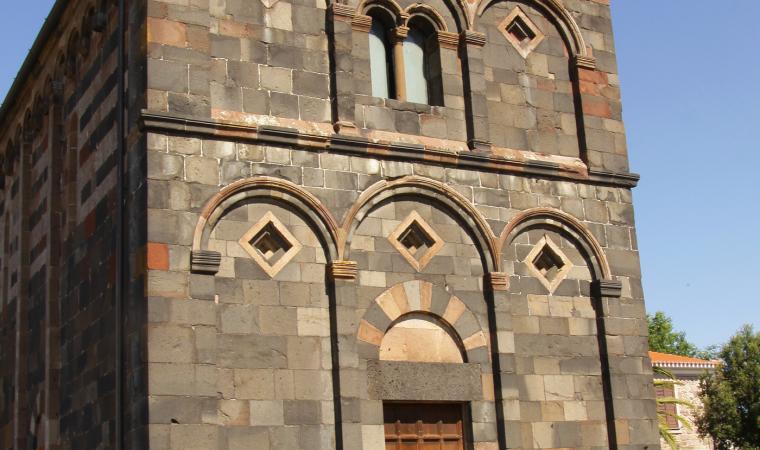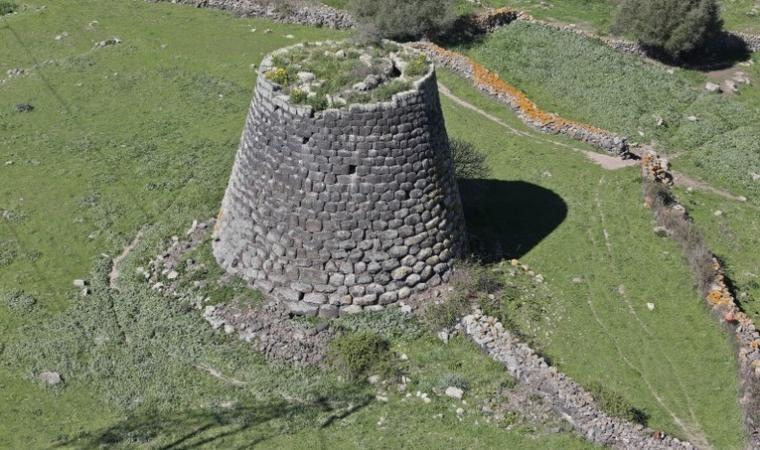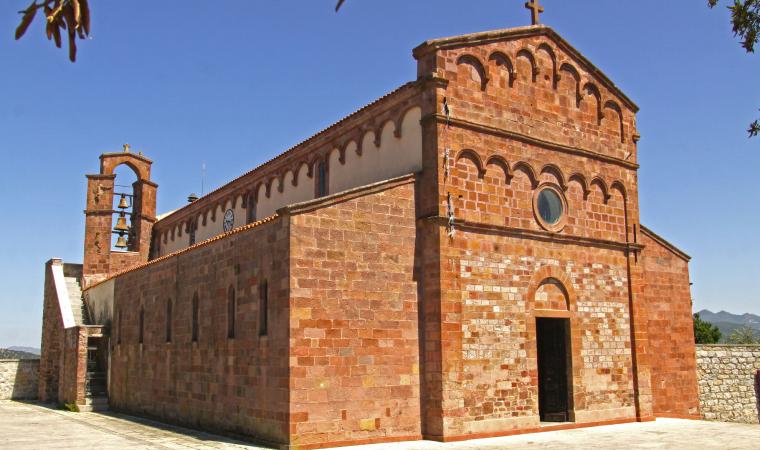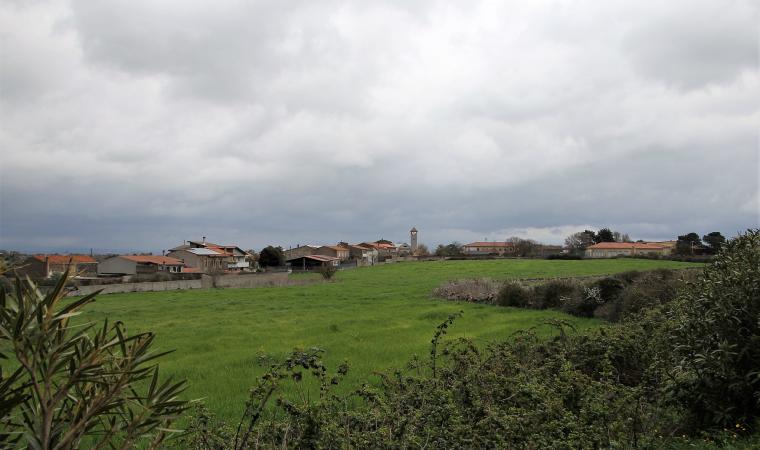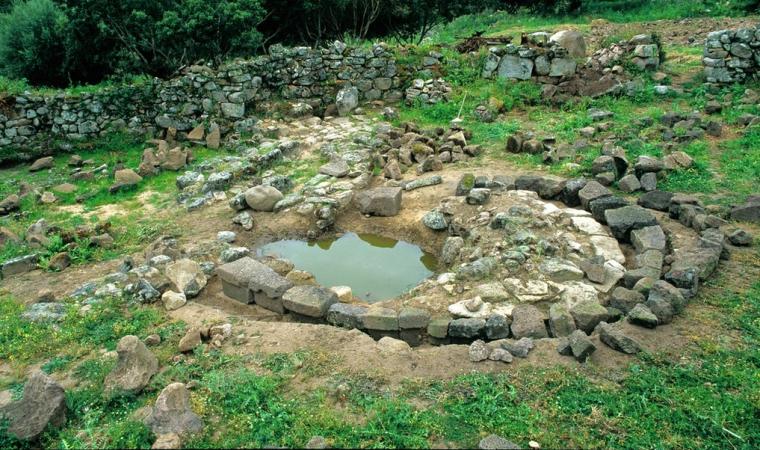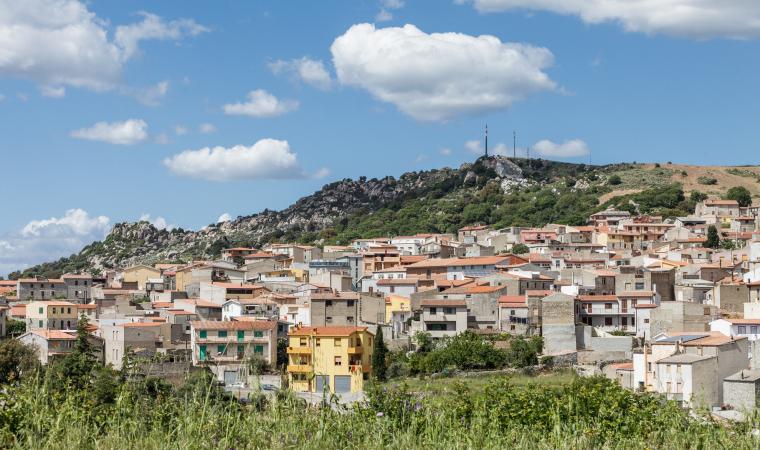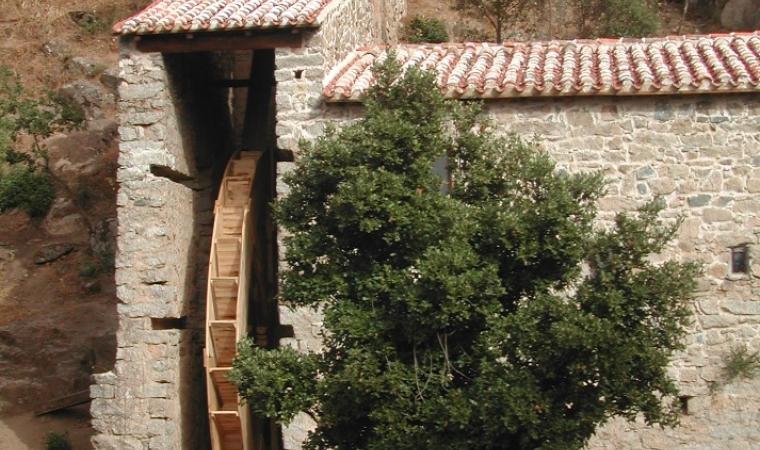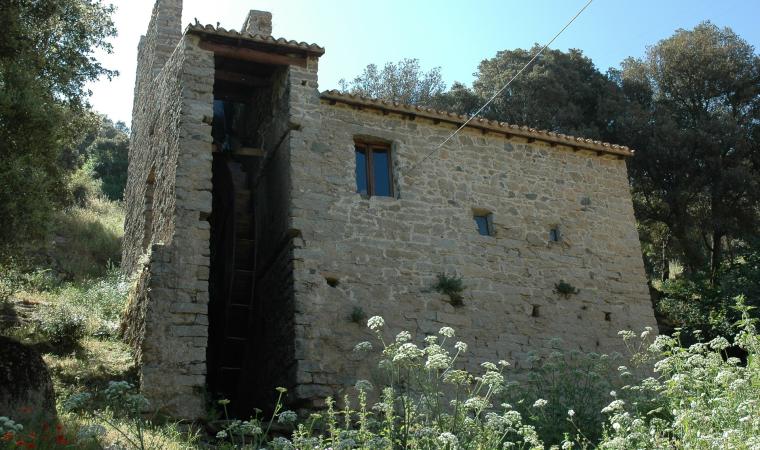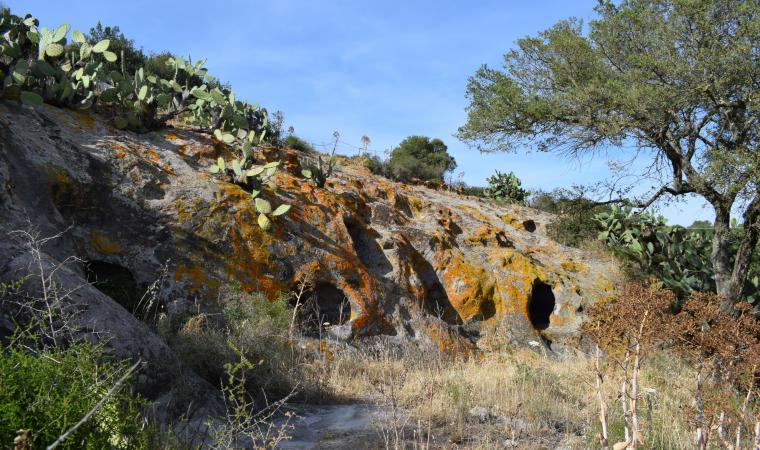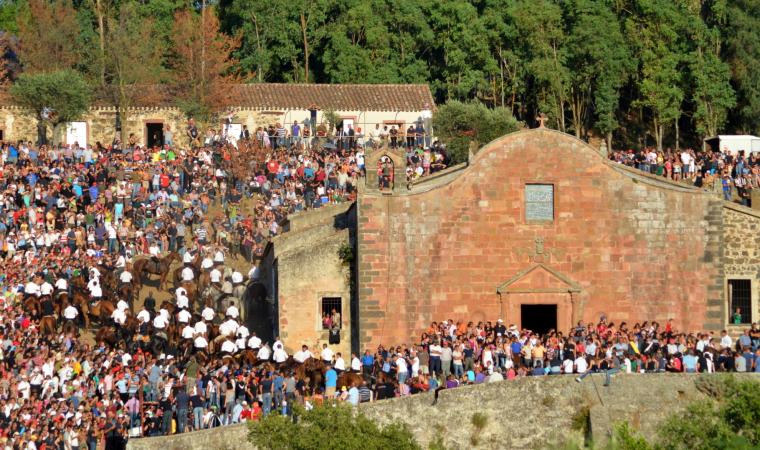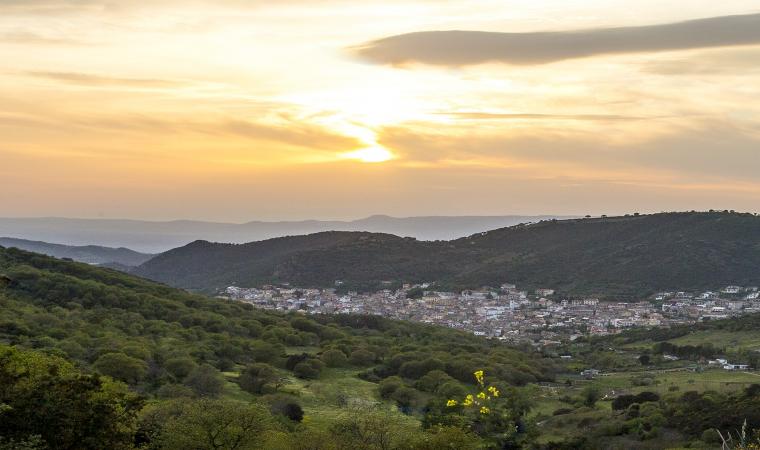The alternation of austere black-purple basalt of the walls and of dynamic pink trachyte in the arches and columns forms a unique two-tone that renders it mysterious and fascinating. From its vantage point atop a knoll in an isolated yet prominent position, the church of San Nicola stands above the village of Ottana, in the heart of the island. It was constructed in the Pisan-Romanesque style on the site of a pre-existing early medieval building, as was confirmed by burials discovered during excavations. The date of consecration (1160) is ‘branded’ on a parchment found during the restoration of the main altar. The imposing building was the cathedral of the Ottana diocese from 1112 until 1503, when the site was suppressed and transferred to Alghero. In much of the interim, between the institution of the diocese and the completion of the works, the nearby San Giovanni di Orotelli took on the role of cathedral.
The complex, 28 metres in length and nearly half that in width and height (15 metres), shows an impressive architectural unity, despite having undergone two phases of construction. The apse, transept and northern flank all belong to the initial phase. Subsequently, another master created a façade and a southern flank with perfect Pisan decorative styles, with the junction points of the two works being quite clear. A staircase precedes the gabled façade, high and narrow, unfurling over three orders with pilasters that form three large arches in the first two orders and a false loggia in the third. At the centre of the lower order, there is an architraved portal surmounted by a round arch comprised of polychrome wedges and a pink stone bezel. In the median order, a mullioned window illuminates the space within. The gables and hanging arches articulate the entire external coverage of the temple: the southern side takes on the style of the façade, the bi-chromatic nature standing out, with the alternation of trachyte in different colours. In total, there are 27 small arches that decorate the San Nicola perimeter.
The interior with a crux commissa, built in dark trachyte, is striking due to its simplicity and severity, accentuated by the height of the walls enclosed by wooden trusses. The arms of the transept and presbytery are barrel-vaulted, with a large semi-circular apse filling the eastern end of the nave. At the head of the transept are two single windows, whilst a Greek cross is in the middle of the apse.
The church houses a 16th-century wooden crucifix and, most importantly, a 14th-century Polyptych, the Pala di Ottana attributed to the master of Franciscan tempera (active in Naples between 1330 and 1345). Scenes from the life of Saints Francis and Nicholas are depicted, with two historical figures represented - the bishop of Ottana Silvestro and the heir to the Giudice throne, the future Mariano IV of Arborea.

